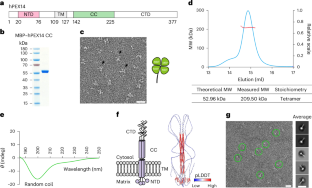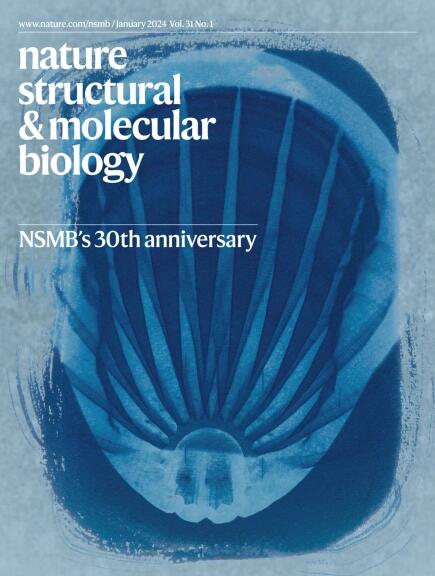PEX14凝聚物招募受体和货物对,用于过氧化物酶体蛋白的进口
IF 10.1
1区 生物学
Q1 BIOCHEMISTRY & MOLECULAR BIOLOGY
引用次数: 0
摘要
过氧化物酶体蛋白作为折叠蛋白通过主要由PEX13中的酪氨酸-甘氨酸(YG)重复序列形成的生物分子凝聚物与受体过氧化物酶体生物发生因子5 (PEX5)结合,进入过氧化物酶体。PEX14是易位子复合体的另一个重要组成部分,通过其n端结构域与PEX5和PEX13相互作用,参与了这一过程。临床数据表明,人类PEX14 (hPEX14) c端结构域(CTD)对过氧化物酶体蛋白的输入至关重要。这里我们分析了hPEX14四聚体的整体结构,并证明hPEX14 CTD在体外进行了相分离。用其他能够形成凝聚物的多肽代替hPEX14 CTD部分恢复过氧化物酶体蛋白的输入。我们发现静电相互作用和CTD的特定序列对于过氧化物酶体的导入至关重要。hPEX14和hPEX13形成不混相凝聚物,hPEX14凝聚物以依赖于pex5的方式吸收含有过氧化物酶体靶向信号1 (PTS1)或PTS2的货物。总的来说,我们的研究表明,PEX14凝聚物招募受体-货物复合物,随后分配到PEX13 YG相。本文章由计算机程序翻译,如有差异,请以英文原文为准。


PEX14 condensates recruit receptor and cargo pairs for peroxisomal protein import
Peroxisomal proteins are imported into peroxisomes as folded proteins bound to the receptor peroxisomal biogenesis factor 5 (PEX5) through a biomolecular condensate mainly formed by the tyrosine–glycine (YG) repeats in PEX13. PEX14, another essential component of the translocon complex, contributes to this process by interacting with PEX5 and PEX13 through its N-terminal domain. Clinical data suggest that the human PEX14 (hPEX14) C-terminal domain (CTD) is crucial for peroxisomal protein import. Here we analyze the overall structure of the hPEX14 tetramer and demonstrate that hPEX14 CTD undergoes phase separation in vitro. Replacing hPEX14 CTD with other polypeptides capable of forming condensates partially restores peroxisomal protein import. We found that electrostatic interactions and the specific sequence of the CTD are essential for peroxisomal import. hPEX14 and hPEX13 form immiscible condensates and hPEX14 condensates recruit cargoes containing peroxisome-targeting signal 1 (PTS1) or PTS2 in a PEX5-dependent manner. Overall, our study proposes that PEX14 condensates recruit the receptor–cargo complexes for subsequent partitioning into the PEX13 YG phase. Wu et al. shed light on the role of peroxisomal biogenesis factor 14 (PEX14) in peroxisomal protein import. They show that PEX14 condensates recruit the receptor PEX5 loaded with peroxisome-targeting signal 1 (PTS1) clients or PTS2 clients bound to receptor PEX7.
求助全文
通过发布文献求助,成功后即可免费获取论文全文。
去求助
来源期刊

Nature Structural & Molecular Biology
BIOCHEMISTRY & MOLECULAR BIOLOGY-BIOPHYSICS
CiteScore
22.00
自引率
1.80%
发文量
160
审稿时长
3-8 weeks
期刊介绍:
Nature Structural & Molecular Biology is a comprehensive platform that combines structural and molecular research. Our journal focuses on exploring the functional and mechanistic aspects of biological processes, emphasizing how molecular components collaborate to achieve a particular function. While structural data can shed light on these insights, our publication does not require them as a prerequisite.
 求助内容:
求助内容: 应助结果提醒方式:
应助结果提醒方式:


